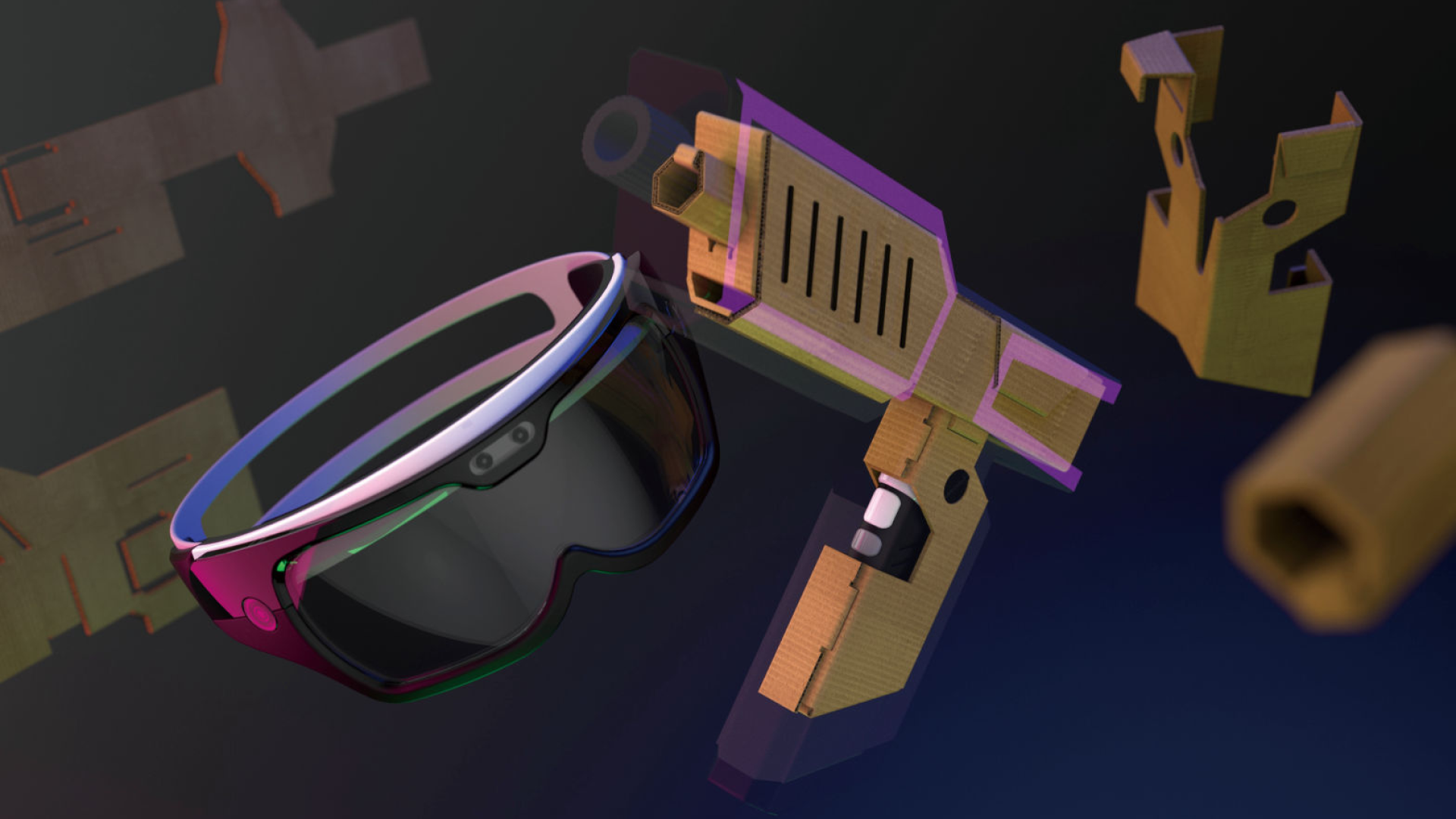
MRCBG
A service that sparks exciting interaction between people during boring transfer times
MRCBG is a mixed reality game that encourages social interaction
and teamwork among strangers in public places where people are
stuck waiting for long and boring transfers. These transfers can
take up to five hours or more, leaving people with nothing to do
but use their phones.
To play the game, users wear
shared mixed reality headsets and cardboard guns, which are
transformed into virtual weapons with stunning graphics. Players
are divided into two teams and engage in a shooting game. The
cardboard guns can also be kept as souvenirs, allowing players
to take home memories of the game.
About this project
My role : Individual
User research, User experience, Industrial design
Main tools involved
Fusion360(Sheet metal), Keyshot
Project duration
2.5
week
Design background
People are bored while transferring
Commuters often find transferring to be a nightmare, as it is often the most tedious part of their journey. If they are not able to leave the transfer area and explore the surrounding area during a long layover, their options for activities during the lengthy wait are limited.
Research
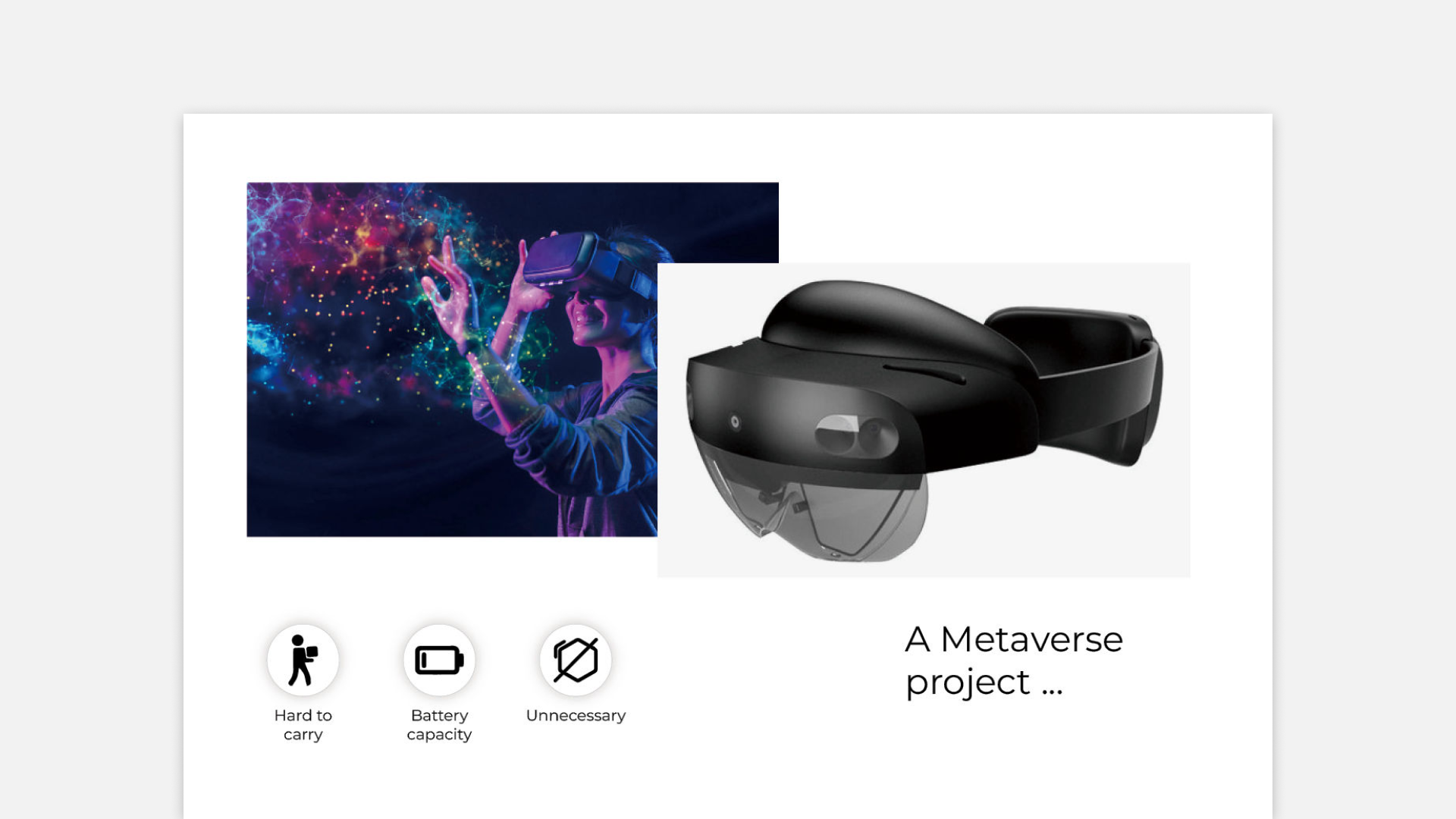
What is MR (Mixed-reality) ?
MR, or mixed reality, combines AR and VR to allow individuals to interact with virtual elements within their real-world surroundings. This technology allows for a seamless blend of the virtual and physical worlds.
Metavese access is still limited for common people
The Metaverse is a virtual world where people can engage in various activities, created within an artificial context. It is believed that MR headsets will be the primary method for accessing the Metaverse, though currently, hardware limitations hinder its widespread adoption. Research suggests that we are still in the early stages of Metaverse popularization.
Possibility
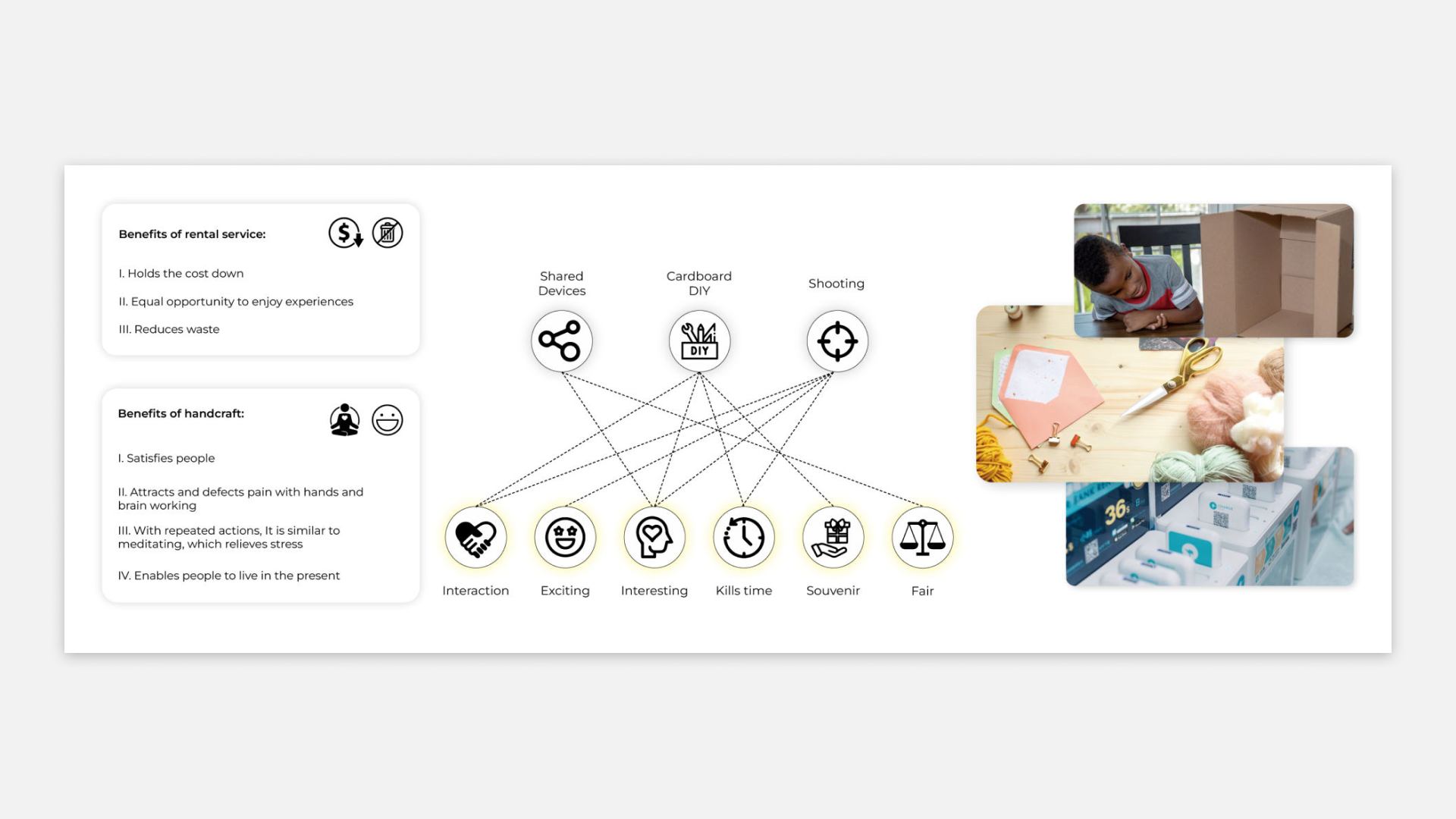
What about A MR game that sparks interaction between people in the airports?
1. DIY and handcrafts kill time and are good for mental health Handcrafting has been found to have therapeutic benefits for individuals with conditions such as stroke, cancer, and mental illness. One respondent even suggests that the act of creating something out of a material can be a form of self-discovery and fulfillment for the hands, heart, and brain.
2. Shared service holds the cost down MR devices can be expensive and may not always be necessary. By sharing these devices through shared services, people who may not be able to afford their own can still experience MR technology, and unnecessary purchases can be avoided. This allows for the full utilization of MR headsets and reduces waste.
Combining cardboard and controller
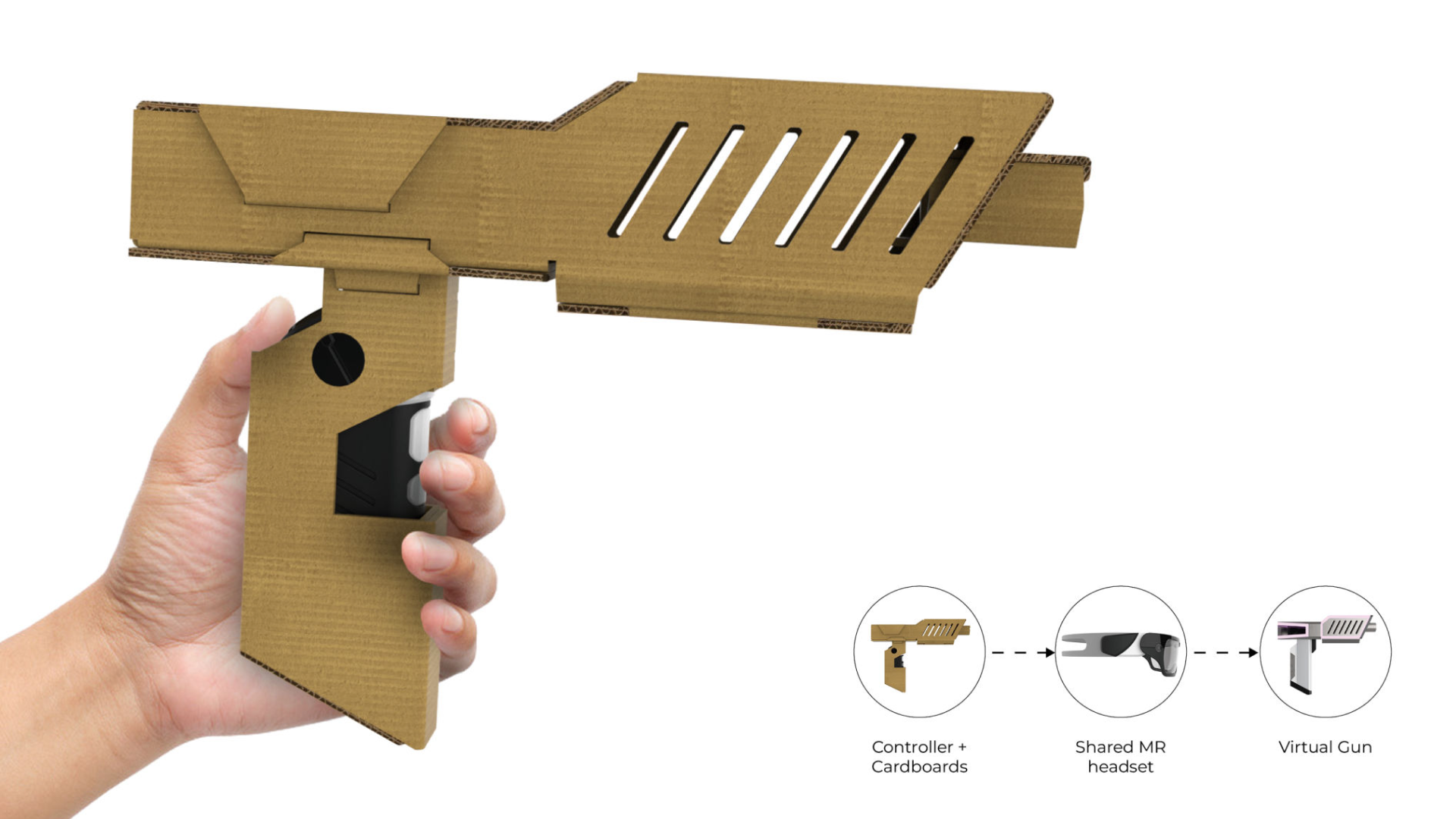
Cardboard items fit securely onto the controller with two docking points on the sides and fits comfortably in the user's hand, with all buttons functioning properly.
Shared MR Devices
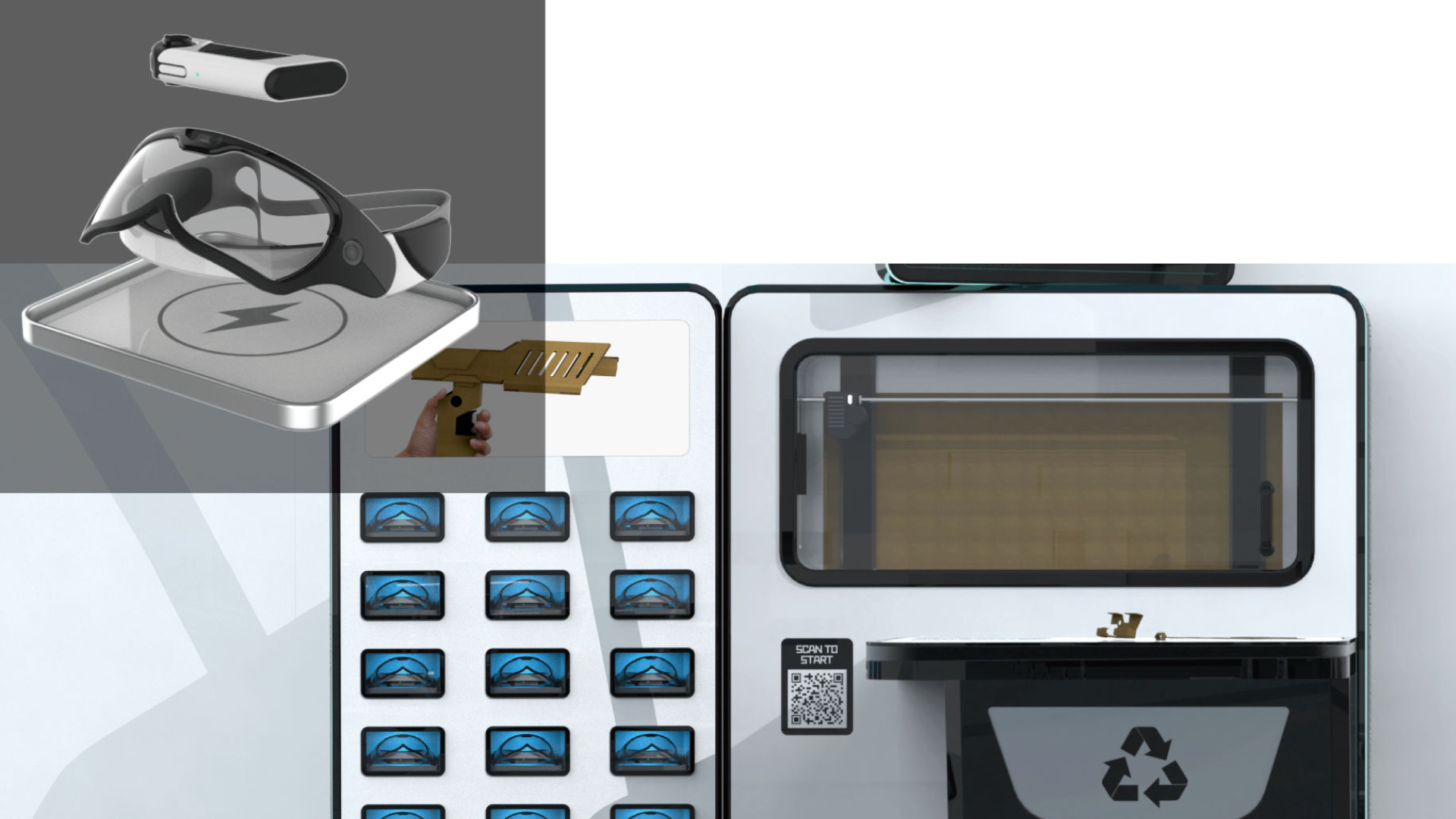
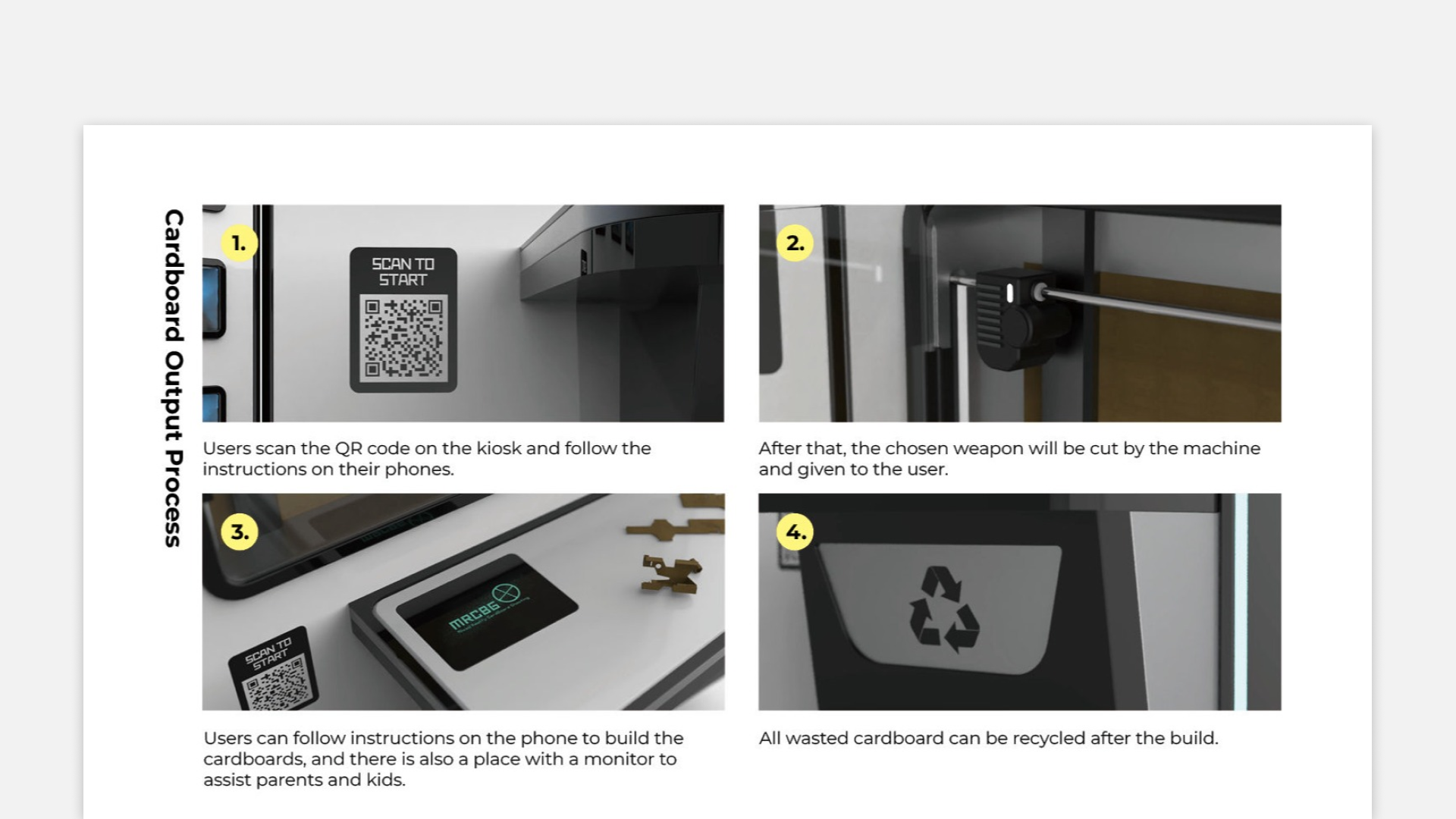
Every section of the machine includes a pair of MR headsets, a controller for rental, and a wireless charging plate for use while the devices are not rented. The machine's top screen displays advertising, announcements, and other information for users.
Process in 3D
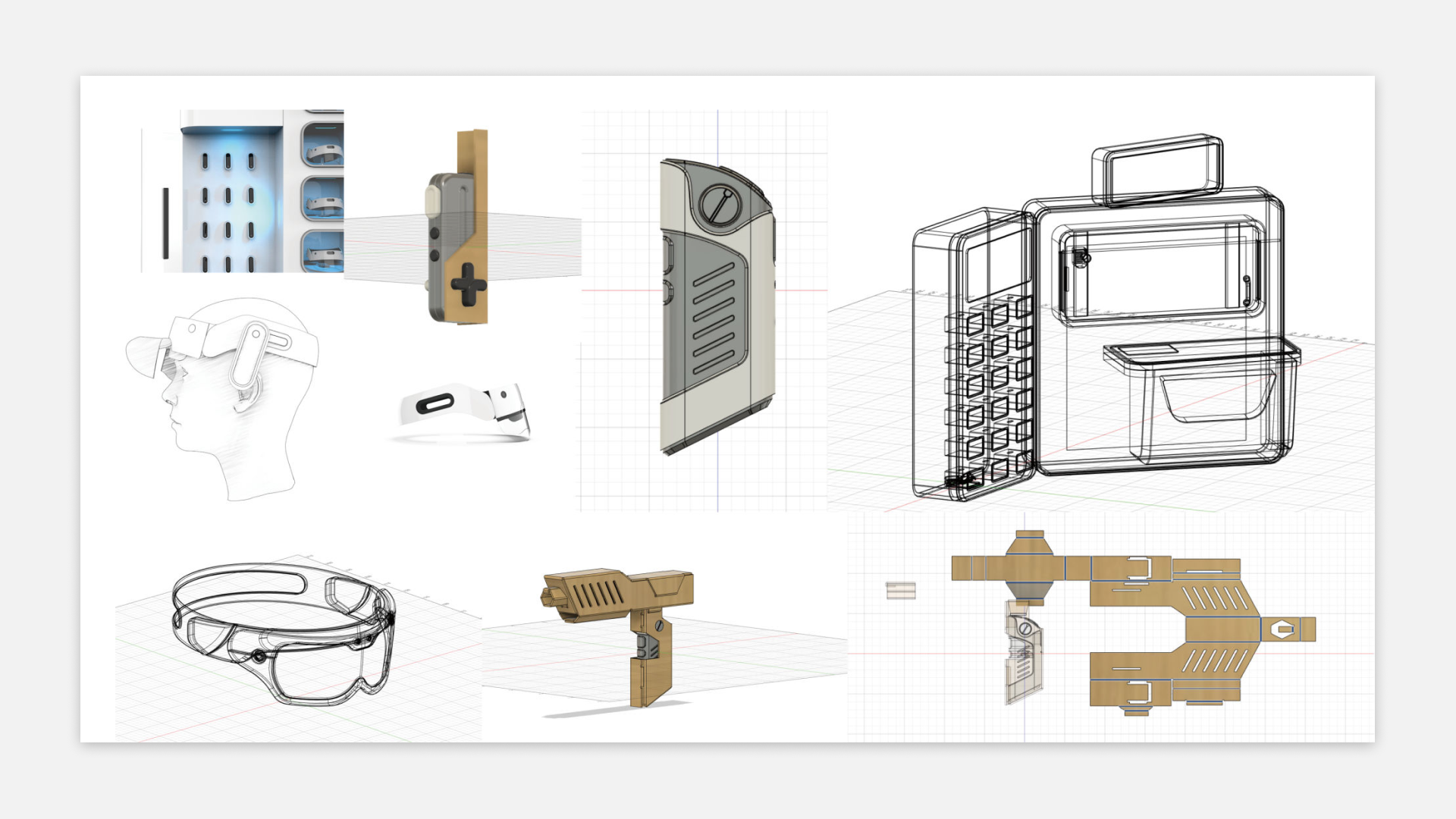
The project involves creating multiple products, including two that must fit comfortably on the human body and a cardboard attachment that must fit securely and function properly on the controller. The cardboard designs can be created using the sheet metal function in Fusion360, allowing for the creation of foldable models. The products designed consisted of:
1. MR headset
2. Controller
3. Cardboard
4. Kiosk
Designed for long endurance
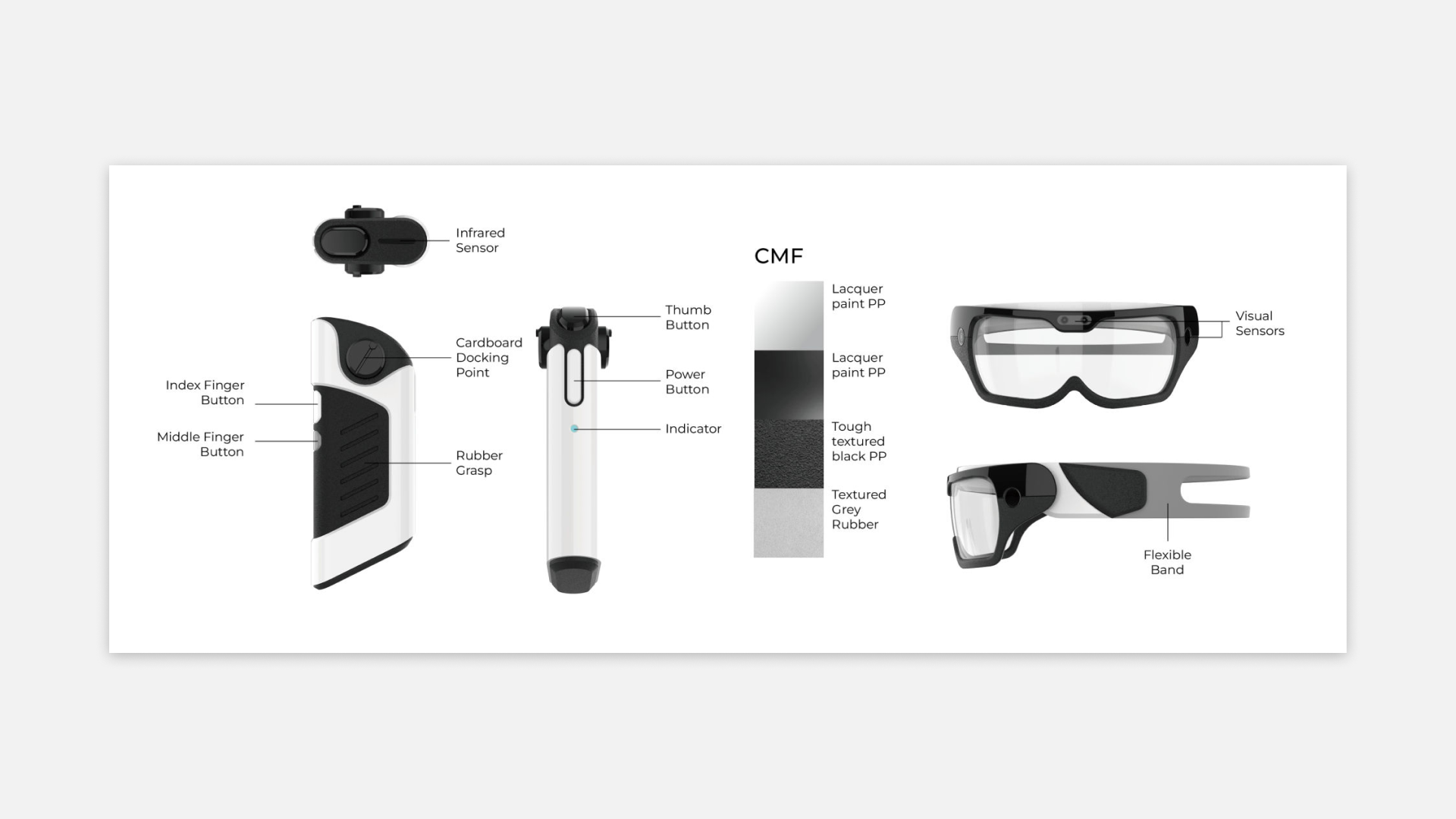
To ensure the longevity of the rented products, they are designed using affordable and durable materials such as strong PP plastic. These materials protect the PCBs and provide all necessary functions for use during gameplay.
Sparking interactions between people
Players are split into two teams, comprising individuals from various locations around the globe. The game provides an opportunity for interaction among people who may never have otherwise crossed paths.
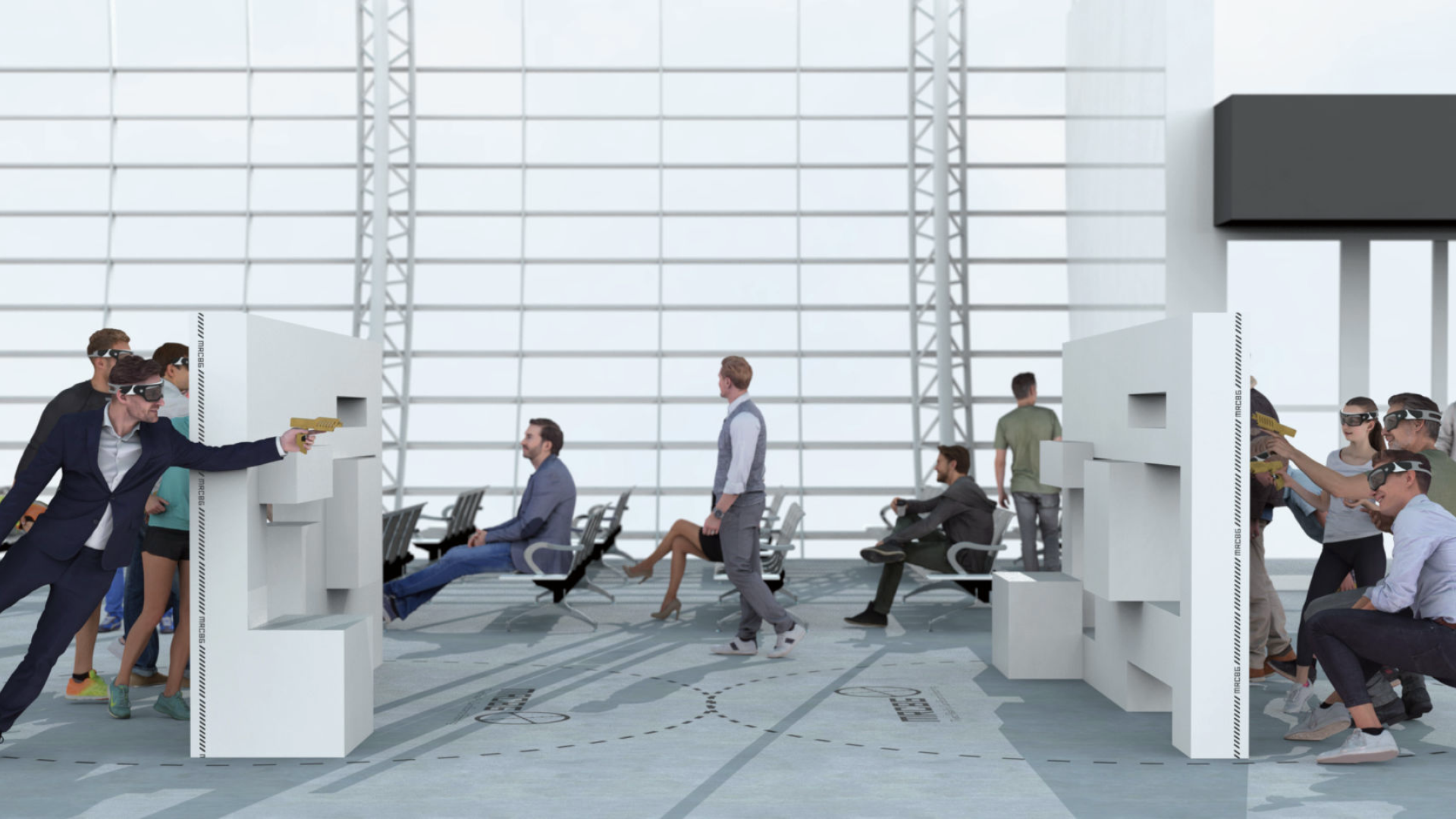
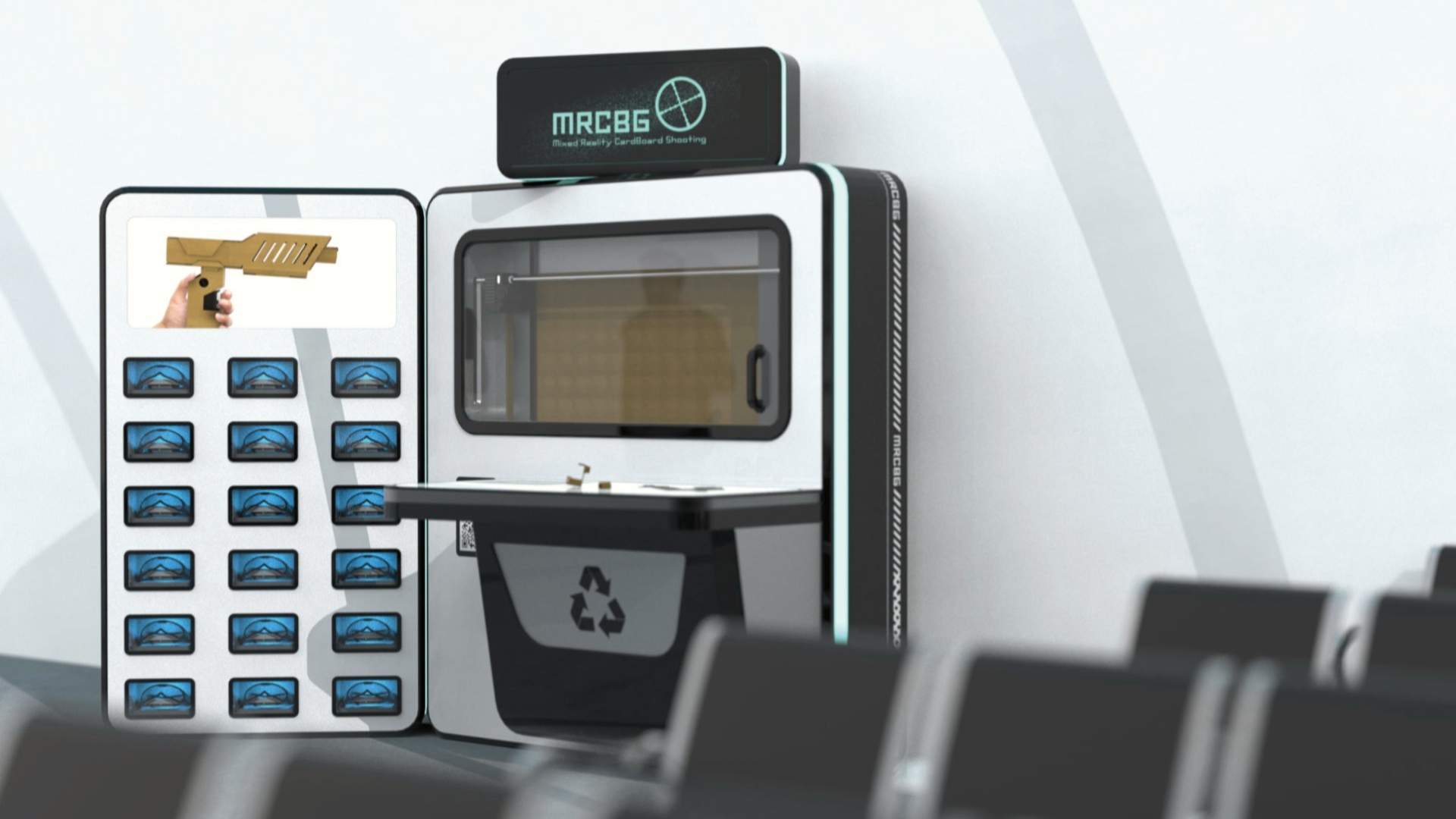
Designed and coded by Hantus Chen.